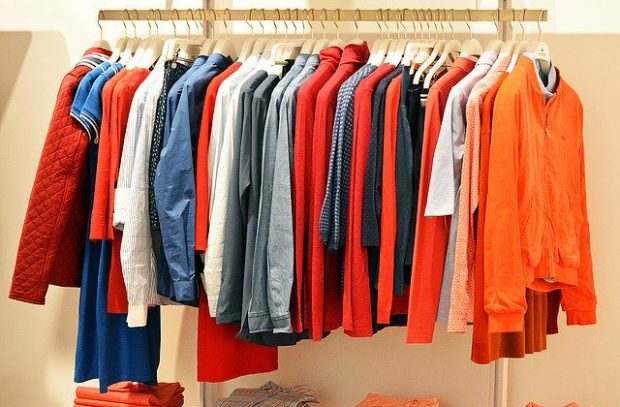
Yesterday saw the launch of the Donation Generation initiative, which is encouraging millions of consumers across the UK to donate and reuse their unwanted garments instead of sending them to landfill and incineration.
It also saw a report by the Telegraph that there has been an increase in clothes going to landfill or incineration, along with the suggestion that cases of fraudulent charity clothing collections had contributed to an increasing trend of throwing clothes into the bin, rather than donating them for reuse.
Led by our partner organisation WRAP (Waste and Resources Action Programme), Donation Generation is part of their wider Love Your Clothes campaign which, since 2014, has been focussed on producing a more sustainable and environmentally-friendly textiles industry by encouraging consumers to:
- buy clothes which are easier to care for and made to last
- care and repair their clothes to make them last longer
- refashion and alter exisiting garments to produce something new
- recycle unwanted clothes through reselling them or donating them to clothes banks
In December, WRAP published their Textiles Marketing Situation Report which provided an update on how clothes were being disposed of.
The report is part of WRAP’s Sustinable Clothing Action Plan (SCAP 2020), which brings together major retailers, brands, recyclers, sector bodies, NGOs and charities to enable organisations at all levels of the clothing and textiles industry to work together to measure and reduce their environmental footprints.
The report concluded that their participating companies had managed to hit targets on reduced water usage and carbon output, but that more items are being disposed of in the residual bin, meaning more clothes ending up in landfill or incineration.
In light of the Telegraph’s report, WRAPs Donation Generation therefore comes at a very good time to encourage people to donate their unwanted clothes to charities and clothes banks, and not to the residual waste bin.
Producing a more sustianable textiles industry is a key aspect to achieving a more sustainable and circular waste economy, which lies at the heart of our Resources and Waste Strategy.
Commenting on WRAP’s work and the need to tackle clothing waste, Environment Minister Rebecca Pow said:
Wrap’s report shows some of the country’s biggest clothing brands and retailers are making real progress in making their industry more sustainable. The Sustainable Clothing Action Plan is a great way for the textiles industry to come together and do more to protect our precious natural environment, and we will continue to work with everyone involved to take forward this initiative.
But there’s much more to do, in particular, reducing the amount of clothing that goes to landfill. That’s why this government is committed to protecting the environment and tackling climate change by cutting waste and using resources more sustainably through plans set out in our landmark Resources and Waste Strategy.
Spread the word by sharing #Donation Generation on Facebook, Twitter and Instagram. You can also follow Defra on Twitter and sign up for email alerts here.
1 comment
Comment by William Hughes-Games posted on
And finally, if at the end of their life, clothes are to be sent to land fill,,,, don't. Pyrolize them. This is the ultimate solution for any organic waste that has no better purpose. Better still, it can recycle used tires, wood waste, tallow, all plastic (clean or contaminated) and a host of other materials, turning them into LPG, gasoline, diesel, air craft kerosene and so forth. https://mtkass.blogspot.com/2019/09/pyrolysis.html Surly if it was once worthwhile to send our waste plastic all the way to China it is worthwhile to send it to our 'in country' pyrolysis unit.